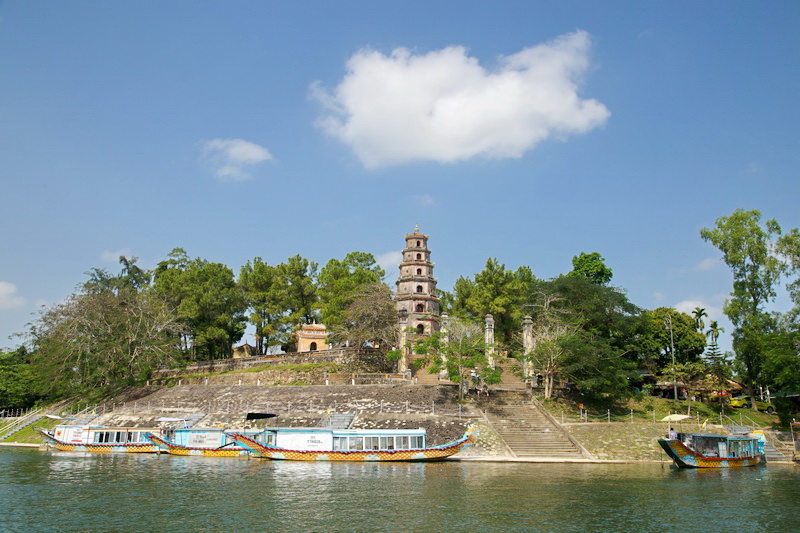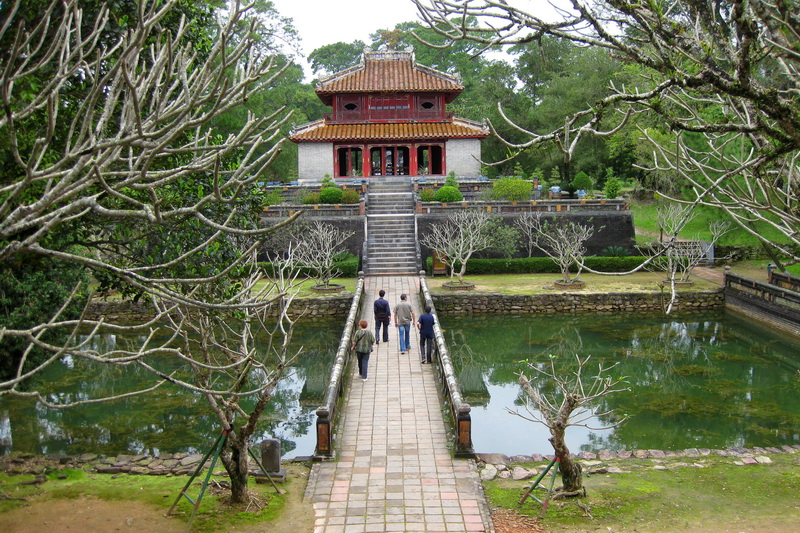Hue Sightseeings and Activities
1. Hue Imperial City
Set along the Northern bank of Perfume River, Hue Imperial City features the hundreds of monuments dating back to early 19th century. It is including Forbidden Purple City, royal tombs, pagoda, temples, royal quarters, library and museum.
Thien Mu Pagoda
The pagoda is on a hill outside Hue City Center, it offers breathtaking views of the Perfume River and Imperial City. It is famous for a 21 metre-tall octagonal tower called Thap Phuoc Duyen which was built in 1844 under the reign of Emperor Thieu Tri.

Thanh Toan Bridge
Built during the reign of Emperor Le Hien Tong (1740 – 1786), this wooden bridge is built over the Nhu Y River and spans 17 meters in length. It is a tile-roofed footbridge which is similar to Hoian’s Japanese Covered Bridge, featuring ancient Chinese and Japanese motifs. It is just 20-minute drive from Hue City and you will see the traditional villages, rice paddies, and pagodas on the way.

The To Mieu Temple
It was constructed by Emperor Minh Mang in 1821 and is a part of the UNESCO-protected Complex of Hue Monuments now. Visiting this site, you will find the nine dynastic urns that symbolize the power and stability of the Nguyen Dynasty. Each urn is about 2 meters tall and weighs up to 2,600kg. The largest urn is in central and was built to commemorate Emperor Gia Long – the first emperor of Nguyen Dynasty.
Minh Mang Tomb
It is located along the west bank of Perfume River and around 30-minute drive from Hue City. It was started building in 1840 under the order of Emperor Minh Mang before it was completed two years later during Emperor Thieu Tri’s reign and surrounded by landscape lakes and canals.

Tu Duc Tomb
It is one of the many royal tombs set within the outskirts of Hue Imperial City. Built between 1864 and 1867, it is home to a massive lake and over 50 palaces, pavilion, temples and shrines, the tomb offers a relaxing ambiance for visitors looking to experience the remnants of the ancient Nguyen Dynasty.

Bach Ma National Park
Stands at 1450 meters above sea level, it hosts majestic waterfalls, hiking trails, and dilapidated French villas. It is also home for thousands of rare plants and wildlife. The visitors can enjoy a full day of hiking, camping, rappelling, swimming and even abseiling over Do Quyen fall.


